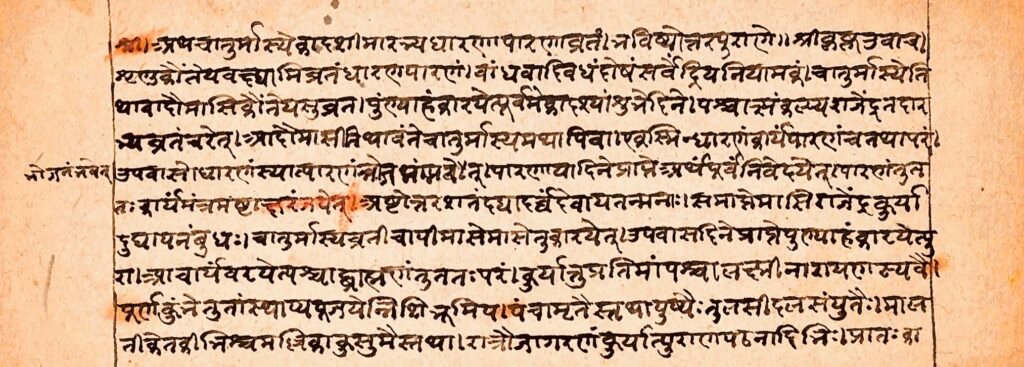Bhavishya Purana with meaning
Bhavishya Purana

The Bhaviṣya Purāṇa: History and Context
The Bhaviṣya Purāṇa is one of the eighteen Mahāpurāṇas of Hindu tradition. Its name, Bhaviṣya (“future”), suggests that it deals with prophecies and accounts of events to come. Indeed, this text is famous for containing unusual references to historical and even post-Vedic religions, making it one of the most controversial of the Purāṇas.
Composition and Dating
Unlike many early Purāṇas, the Bhaviṣya Purāṇa is a living text, compiled and expanded over a long period. Scholars generally date its oldest portions to around the 1st millennium CE (possibly between the 3rd and 7th centuries), while large parts of the text were added much later, between the 13th and 19th centuries CE.
The extant version contains about 14,500 verses, but these are unevenly distributed, and much of the content is believed to be interpolated. The text has thus been described as a Purāṇic anthology, reflecting changing religious, political, and social contexts through history.
Structure
The Bhaviṣya Purāṇa is divided into four main sections (parvans):
- Brāhma Parvan – about 215 chapters, covering cosmology, genealogies, rites, and festivals. It includes discussions of Hindu rituals such as vrata, puja, and samskāras, and it prescribes practices for householders.
- Madhyama Parvan – about 62 chapters, largely a dialogue between the Sun-god (Sūrya) and various sages. It contains discussions on dharma, astrology, and omens.
- Pratisarga Parvan – about 129 chapters, the most controversial portion. It narrates histories and “future” events, including references to the rise of Buddhism, Jainism, Islam, Christianity, the Mughals, and even the British. These anachronistic accounts are believed to be later insertions.
- Uttara Parvan – about 208 chapters, dealing with festivals, vrata (vows), pilgrimage sites, charity, and other aspects of religious life.
Themes and Content
At its core, the Bhaviṣya Purāṇa resembles other Purāṇas, dealing with cosmology, dharma, genealogies of gods and kings, and rituals. Its unique feature, however, is its prophetic character. For example:
- The Pratisarga Parvan describes encounters with foreign rulers and religious teachers. It includes mentions of Prophet Muhammad, Jesus Christ, and even Queen Victoria, though these passages are widely regarded as late interpolations reflecting contact with Islamic and Christian traditions.
- The Uttara Parvan provides detailed descriptions of Hindu festivals like Holi, Diwali, and Ekādaśī, which are still influential in shaping ritual calendars.
Religious and Cultural Significance
The Bhaviṣya Purāṇa is particularly valued for its ritual and festival sections, which preserve information about regional Hindu practices. It reflects the dynamic, adaptive quality of Purāṇic literature—absorbing new influences and reinterpreting them within a Hindu framework.
Culturally, it shows how Purāṇas served not only as mythological and theological texts but also as historical chronicles, recording society’s encounters with other religions and political powers. This feature makes the Bhaviṣya Purāṇa a unique witness to the evolution of Indian religious identity.
Historical Influence
Though often dismissed by scholars as “late” or “inauthentic” due to its interpolations, the Bhaviṣya Purāṇa remains important. It illustrates how Hindu tradition preserved memory of social and political change through mythic prophecy. Its references to non-Indian religions, while historically inaccurate, reveal how Indian authors perceived and responded to foreign faiths.
Thus, the Bhaviṣya Purāṇa stands as a text not of timeless myth alone, but of living history, continuously reshaped to reflect the concerns of each age.




















































